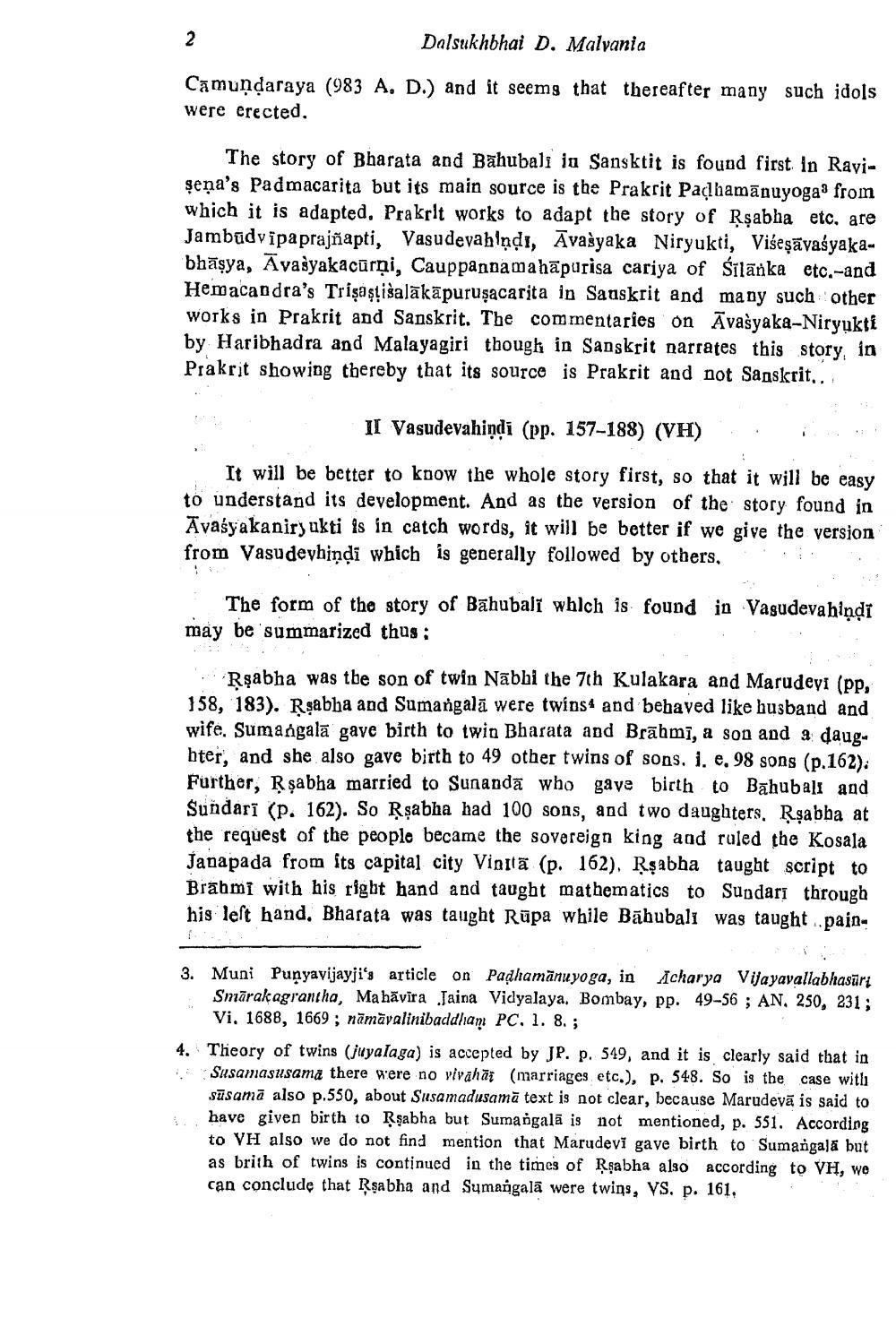________________
Dalsukhbhai D. Malvania
Camundaraya (983 A, D.) and it seemg that thereafter many such idols were erected,
The story of Bharata and Bahubali in Sansktit is found first in Ravişeņa's Padmacarita but its main source is the Prakrit Padhamānuyoga' from which it is adapted, Prakrit works to adapt the story of Rşabha etc. are Jambudvipaprajñapti, Vasudevahiņdı, Āvašyaka Niryukti, Višeşāvaśyakabhāșya, Avašyakacūrņi, Cauppannamahāpusisa cariya of śīlānka etc.-and Hemacandra's Trişastišalākāpuruşacarita in Sanskrit and many such other works in Prakrit and Sanskrit. The commentaries on Āvašyaka-Niryukti by Haribhadra and Malayagiri though in Sanskrit narrates this story, in Prakrit showing thereby that its source is Prakrit and not Sanskrit...
II Vasudevahiņdi (pp. 157–188) (VH)
..
i
It will be better to know the whole story first, so that it will be easy to understand its development. And as the version of the story found in Āvasyakanir, ukti is in catch words, it will be better if we give the version from Vasudevhindi which is generally followed by others, i
The form of the story of Bāhubali which is found in Vasudevahindi may be summarized thus:
. Rşabha was the son of twin Nabhi the 7th Kulakara and Marudeyi (pp, 158. 183). Rsabha and Sumangalā were twins and behaved like husband and wife, Sumangalā gave birth to twin Bharata and Brāhmi, a son and a daugbter, and she also gave birth to 49 other twins of sons. i. e. 98 sons (p. 162): Further, Rsabha married to Sunanda who gave birth to Bāhubali and Sundarī (p. 162). So Rşabha had 100 sons, and two daughters, Rşabba at the request of the people became the sovereign king and ruled the Kosala Janapada from its capital city Vinita (p. 162), Rşabha taught script to Brāhmi with his right hand and taught mathematics to Sundari through his left hand, Bharata was taught Rūpa while Bāhubali was taught pain
3. Muni Punyavijayji's article on Padhamānuyoga, in Acharya Vijayavallabhasūri
Smārakagrantha, Ma hāvīra Jaina Vidyalaya, Bombay, pp. 49-56 ; AN, 250, 231;
Vi. 1688, 1669; nāmāyalinibaddham PC. 1. 8. ; 4. Theory of twins (juyalaga) is accepted by JP. p. 549, and it is clearly said that in
Susamasusama there were no vivahāž (marriages etc.), p. 548. So is the case with Sūsamā also p.550, about Susamadusamā text is not clear, because Marudevā is said to have given birth to Rşabha but Sumangalā is not mentioned, p. 551. According to VH also we do not find mention that Marudevi gave birth to Sumangalā but as brith of twins is continued in the times of Rşabha also according to VH, we can conclude that Rsabha and Sumangalā were twins, VS, p. 161.




